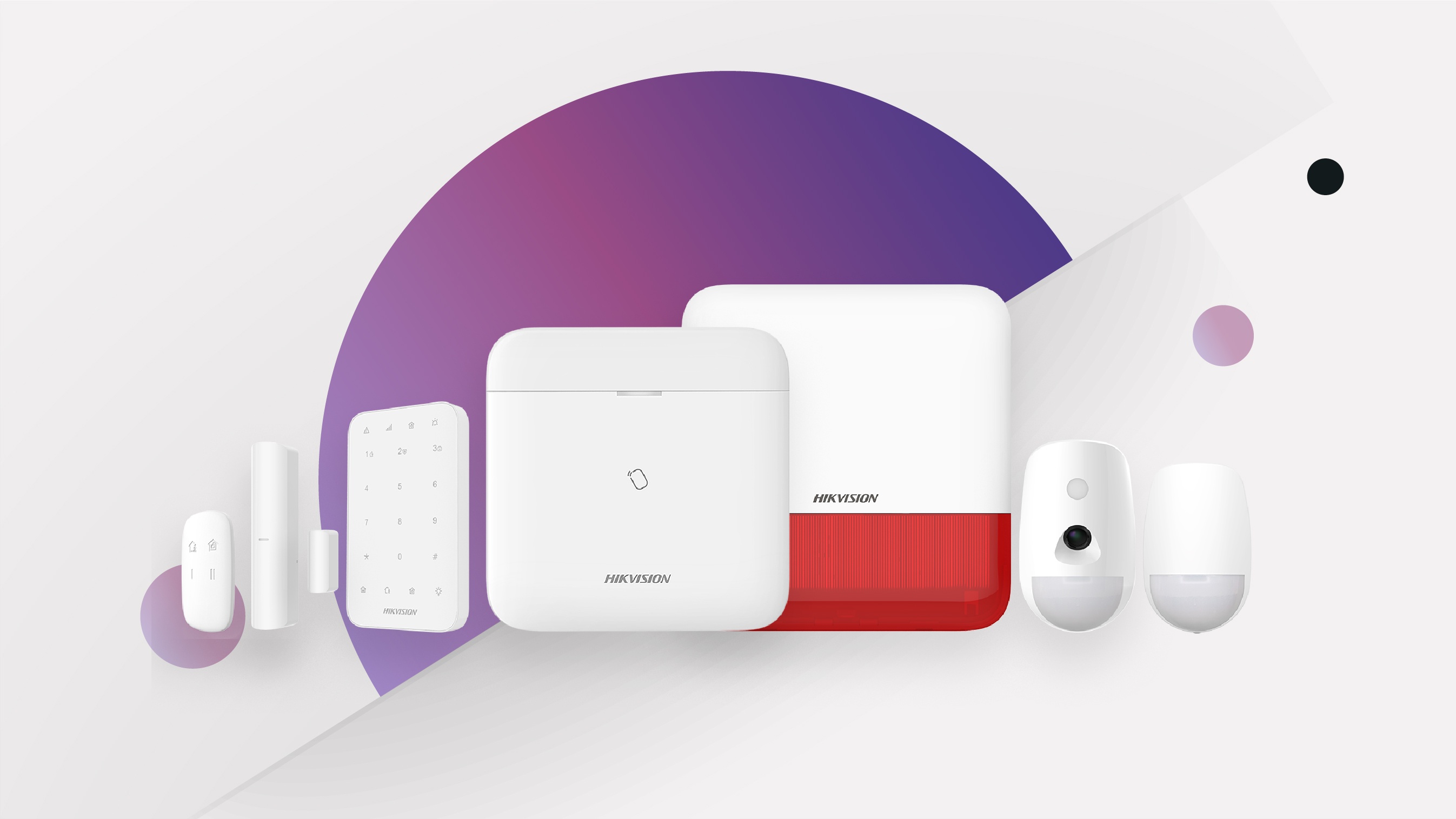Home>Home Security and Surveillance>What Is An Advanced Intrusion Detection Environment


Home Security and Surveillance
What Is An Advanced Intrusion Detection Environment
Modified: March 6, 2024
Discover the benefits of the Advanced Intrusion Detection Environment for home security and surveillance. Enhance your safety and protect your property with this advanced system.
(Many of the links in this article redirect to a specific reviewed product. Your purchase of these products through affiliate links helps to generate commission for Storables.com, at no extra cost. Learn more)
Introduction
Welcome to the world of home security and surveillance, where ensuring the safety and protection of your loved ones and your property is of paramount importance. With advancements in technology, home security systems have evolved, offering sophisticated solutions to detect and deter intrusions. One such solution is the Advanced Intrusion Detection Environment.
Intrusion detection refers to the process of monitoring and analyzing network or system activities to identify and respond to malicious activities or unauthorized access attempts. It plays a crucial role in safeguarding your home and providing an additional layer of defense against potential threats.
In this article, we will delve into the concept of intrusion detection and explore the significance of implementing it in a home security system. Furthermore, we will introduce you to the Advanced Intrusion Detection Environment, its key features, benefits, as well as the challenges and limitations associated with its use.
So, if you’re eager to enhance your understanding of home security and surveillance, and want to explore the advanced technologies available for protecting your abode, read on. Let’s dive into the fascinating world of the Advanced Intrusion Detection Environment.
Key Takeaways:
- Intrusion detection is like a security guard for your home network, keeping an eye out for any sneaky cyber threats. The Advanced Intrusion Detection Environment (AIDE) is like a super-smart security guard that can spot even the trickiest intruders!
- AIDE is like a digital superhero for your home network, using its superpowers to detect and stop cyber villains in their tracks. It’s like having a high-tech shield to protect your digital fortress!
Read more: What Is Wireless Intrusion Detection
What is Intrusion Detection?
Intrusion detection is a vital component of any home security system, designed to identify and respond to unauthorized access attempts or malicious activities in real-time. It serves as a proactive defense mechanism, constantly monitoring network traffic, system logs, and user activities to detect any signs of intrusion or potential threats.
The primary objective of intrusion detection is to identify and thwart both external attackers and internal threats, such as unauthorized users or malicious insiders. By detecting suspicious behavior or abnormal network traffic patterns, intrusion detection systems can generate alerts or even take automated actions, such as blocking access or initiating response protocols to mitigate the impact of an attack.
There are two primary types of intrusion detection systems: host-based and network-based. Host-based intrusion detection systems (HIDS) are installed on individual devices to monitor and analyze their activities. They focus on detecting unauthorized access attempts or unusual behavior on a specific device or server.
On the other hand, network-based intrusion detection systems (NIDS) analyze network traffic flowing through routers, switches, or firewalls. They monitor the network for any suspicious activity, such as attempts to exploit vulnerabilities, unauthorized access attempts, or the presence of known malware.
The combination of HIDS and NIDS provides comprehensive coverage, ensuring that both individual devices and the overall network are protected against intrusions.
Intrusion detection is an essential component of a comprehensive home security system. It provides an additional layer of defense by actively monitoring and analyzing activities within the home network, allowing for early detection and response to potential threats.
Now that we have a basic understanding of intrusion detection, let’s explore why it is vital for protecting your home and loved ones.
Importance of Intrusion Detection
In a world where cyber threats and home intrusions are becoming increasingly sophisticated, the importance of implementing intrusion detection in your home security system cannot be overstated. Here are some key reasons why intrusion detection is crucial:
1. Early threat detection: Intrusion detection systems are designed to proactively monitor your home network, identifying and alerting you to any suspicious or malicious activities. By detecting intrusions at their early stages, immediate action can be taken to mitigate the potential damage. 2. Protecting sensitive information: Your home network may contain sensitive personal data, such as financial information, personal correspondence, or even security codes. Intrusion detection helps safeguard this information by detecting and blocking unauthorized access attempts, ensuring that your private data remains secure. 3. Preventing cyberattacks: Cybercriminals are constantly evolving their tactics to gain unauthorized access to networks and devices. Intrusion detection helps safeguard your home network from various cyberattacks, including malware infections, phishing attempts, and distributed denial-of-service (DDoS) attacks. 4. Monitoring suspicious user activities: Intrusion detection systems help track and analyze user activities within your home network. This includes monitoring login attempts, file access, and other network activities to identify any abnormal or suspicious behavior that may indicate an intruder. 5. Mitigating the impact of intrusions: In the unfortunate event that an intrusion occurs, having an intrusion detection system in place allows for quick identification and immediate response. This enables you to take necessary actions to minimize the impact of the intrusion and prevent further damage or data loss. 6. Enhancing overall home security: Intrusion detection is a critical element in a comprehensive home security system. It provides an additional layer of protection alongside physical security measures such as locks and alarms, further fortifying your home against potential threats. 7. Peace of mind: Knowing that your home network is being actively monitored by an intrusion detection system can provide peace of mind. It allows you to focus on other aspects of your life without constantly worrying about the security of your digital assets and personal information. Intrusion detection is not just a luxury but a necessity in today’s rapidly evolving digital landscape. By implementing an effective intrusion detection system, you can significantly reduce the risk of falling victim to cyberattacks and home intrusions, ensuring the safety and security of your home and loved ones.
Elements of an Intrusion Detection System
An intrusion detection system (IDS) consists of several key elements that work together to detect and respond to potential intrusions or malicious activities. These elements include:
1. Sensors: Sensors are responsible for monitoring and collecting data from different sources, such as network traffic, system logs, or user activity. They act as the eyes and ears of the intrusion detection system, capturing information that can be analyzed for signs of intrusion. 2. Event Logs: Event logs store a record of system events, including login attempts, network connections, file accesses, and other activities. These logs provide important information for analyzing user behavior and detecting suspicious or unauthorized activities. 3. Alerting Mechanism: When an intrusion or suspicious activity is detected, the IDS generates alerts to notify the system administrator or security team. Alerts can take various forms, such as email notifications, SMS messages, or notifications within a centralized management console. 4. Anomaly Detection: Anomaly detection is a crucial component of an IDS. It compares current system behavior with a baseline or normal behavior to identify any deviations that may indicate an intrusion. Anomalies can include unusual network traffic, abnormal user behavior, or unexpected system activities. 5. Signature-based Detection: Signature-based detection involves comparing the captured data with a pre-defined set of known attack patterns or signatures. If a match is found, indicating a known attack, an alert is triggered. Signature-based detection is effective in identifying well-known and documented threats. 6. Heuristic Detection: Heuristic detection involves analyzing the behavior and characteristics of network traffic or system activities to identify potential threats. It uses algorithms and rules to detect patterns or actions that may indicate an intrusion, even if no specific signature is known. 7. Centralized Management Console: A centralized management console is a user interface that allows administrators to monitor and manage the IDS. It provides a comprehensive view of the system’s health, alerts, and configuration options, allowing for efficient analysis and response to potential intrusions. 8. Response Mechanism: An IDS should include a response mechanism to take appropriate action in the event of an intrusion or suspicious activity. This can include blocking network traffic, isolating affected systems, or triggering additional security measures to mitigate the impact of the intrusion. 9. Continuous Monitoring: Intrusion detection is an ongoing process that requires continuous monitoring of the network and system activities. This ensures that any potential threats or intrusions are detected in real-time, allowing for immediate response and mitigation. By integrating these elements into an effective intrusion detection system, homeowners can have peace of mind knowing that their home network is actively monitored and protected against potential intrusions or malicious activities.
The Advanced Intrusion Detection Environment
The Advanced Intrusion Detection Environment (AIDE) is a robust and sophisticated intrusion detection system that leverages advanced technologies and algorithms to provide enhanced security for your home and personal network. AIDE goes beyond traditional intrusion detection systems by incorporating cutting-edge features and capabilities.
One of the key differentiators of the Advanced Intrusion Detection Environment is its ability to detect both known and unknown threats. While traditional systems rely heavily on signature-based detection for known threats, AIDE employs advanced heuristic algorithms and machine learning techniques to identify and respond to emerging and previously unseen attacks.
AIDE takes a multi-layered approach to intrusion detection, monitoring various aspects of the home network, including network traffic, system logs, user activities, and external connections. By analyzing these different sources of data, AIDE can detect a wide range of threats, such as malware infections, unauthorized access attempts, network scanning, and suspicious user behavior.
Furthermore, AIDE continuously updates its threat detection capabilities by leveraging threat intelligence feeds and incorporating the latest security research. This ensures that the system remains up-to-date with the ever-evolving threat landscape and can effectively detect and respond to emerging threats in real-time.
The Advanced Intrusion Detection Environment offers a centralized management console that provides a comprehensive view of the system health, alerts, and configuration options. This intuitive interface allows homeowners to easily monitor and manage their intrusion detection system, making it accessible even for users with limited technical expertise.
One of the notable features of AIDE is its seamless integration with other home security systems, such as video surveillance and access control systems. This integration enables AIDE to leverage data from these systems, enhancing its detection capabilities and providing a more holistic security solution for your home.
Another key advantage of the Advanced Intrusion Detection Environment is its low false-positive rate. By utilizing advanced analytics and machine learning algorithms, AIDE can distinguish between genuine threats and harmless anomalies, reducing the number of unnecessary alerts and enabling homeowners to focus on real security concerns.
In addition to its robust detection capabilities, AIDE also provides automated response mechanisms to mitigate the impact of intrusions. These mechanisms can include blocking network traffic, isolating affected devices, or triggering other security measures to prevent further damage.
The Advanced Intrusion Detection Environment is designed to cater to the unique needs of homeowners who prioritize proactive and comprehensive security for their homes. By utilizing advanced technologies, machine learning, and seamless integration, AIDE offers a powerful and dynamic solution to safeguard your home network from evolving threats.
Tip: The Advanced Intrusion Detection Environment (AIDE) is a tool that helps monitor and detect unauthorized changes to your computer system, providing an extra layer of security against potential threats.
Read more: What Is Chassis Intrusion Detection
Key Features of the Advanced Intrusion Detection Environment
The Advanced Intrusion Detection Environment (AIDE) comes equipped with a range of key features that elevate its capabilities and effectiveness as an intrusion detection system. These features contribute to ensuring the security of your home network and detecting potential threats in real-time. Let’s explore some of the key features of AIDE:
1. Advanced Threat Detection: AIDE utilizes advanced algorithms and machine learning techniques to detect both known and unknown threats. By analyzing network traffic, system logs, and user activities, AIDE can identify emerging threats and respond proactively. 2. Real-time Monitoring: AIDE provides continuous and real-time monitoring of your home network, ensuring that any potential intrusions or suspicious activities are identified immediately. This allows for swift response and mitigation. 3. Multi-layered Analysis: AIDE takes a multi-layered approach to intrusion detection, analyzing various data sources to provide comprehensive security. It monitors network traffic, system logs, and user behavior, allowing for a more robust detection capability. 4. Threat Intelligence Integration: AIDE integrates with threat intelligence feeds and incorporates up-to-date security research to stay current with the evolving threat landscape. This ensures that the system is equipped to detect and respond to the latest threats. 5. Centralized Management Console: AIDE offers a user-friendly, centralized management console that provides a comprehensive overview of the system. This console allows homeowners to easily monitor network health, view alerts, and configure the system as needed. 6. Seamless Integration: AIDE seamlessly integrates with other home security systems, such as video surveillance and access control systems. This integration enhances its detection capabilities by leveraging data from these systems and providing a more comprehensive security solution. 7. Low False-Positive Rate: AIDE utilizes advanced analytics and machine learning algorithms to minimize false-positive alerts. This means that homeowners can trust the system to accurately distinguish between real threats and harmless anomalies, reducing unnecessary interruptions. 8. Automated Response Mechanisms: AIDE includes automated response mechanisms to mitigate the impact of intrusions. This can include blocking network traffic, isolating affected devices, or triggering other security measures to prevent further damage. 9. User-Friendly Interface: AIDE offers an intuitive interface that is accessible to users of all technical levels. Homeowners can easily navigate the system, monitor alerts, and manage the intrusion detection system without requiring extensive technical knowledge. 10. Regular Updates: AIDE receives regular updates to ensure it remains up-to-date with the latest security measures and threat intelligence. This ensures that your home network is protected against emerging threats. These key features of the Advanced Intrusion Detection Environment make it a powerful solution for safeguarding your home network. By leveraging advanced technologies, real-time monitoring, and seamless integration, AIDE provides homeowners with peace of mind and enhanced security against potential intrusions.
Benefits of Using the Advanced Intrusion Detection Environment
The Advanced Intrusion Detection Environment (AIDE) offers numerous benefits for homeowners who prioritize the security and protection of their home networks. Let’s explore some of the key benefits of implementing AIDE as your chosen intrusion detection system:
1. Enhanced Security: AIDE provides advanced threat detection capabilities, allowing for the early detection and prevention of potential intrusions. By analyzing network traffic, system logs, and user activities, AIDE can identify both known and unknown threats, ensuring comprehensive protection for your home network. 2. Real-Time Monitoring: With AIDE, you can enjoy continuous real-time monitoring of your home network. This ensures that any suspicious activities or potential intrusions are detected immediately, allowing for prompt response and mitigation. 3. Reduced Risk of Data Breaches: By actively monitoring network traffic and user activities, AIDE helps minimize the risk of data breaches. It can detect unauthorized access attempts and potential security vulnerabilities, providing an additional layer of defense against data breaches. 4. Faster Incident Response: AIDE’s real-time monitoring and automated response mechanisms enable quick incident response. When a potential intrusion is detected, AIDE can automatically trigger actions such as blocking network traffic or isolating affected devices, helping to limit potential damage. 5. Minimized False Positives: AIDE utilizes advanced analytics and machine learning algorithms to minimize false-positive alerts. This means that you can trust the system to accurately distinguish between actual threats and harmless anomalies, reducing unnecessary interruptions and ensuring that you focus on real security concerns. 6. Seamless Integration: AIDE seamlessly integrates with other home security systems, such as video surveillance or access control systems. This integration enhances the overall security capabilities of your home and provides a more holistic approach to protecting your property. 7. User-Friendly Interface: The intuitive user interface of AIDE’s centralized management console makes it easy for homeowners to navigate and manage the system. Even users with limited technical knowledge can monitor alerts, configure settings, and ensure that the intrusion detection system is functioning optimally. 8. Continuous Updates: AIDE receives regular updates to stay up-to-date with the latest security measures and threat intelligence. This ensures that your home network remains protected against emerging threats and vulnerabilities. 9. Peace of Mind: By implementing AIDE as your intrusion detection system, you can have peace of mind knowing that your home network is being actively monitored and protected against intrusions. This allows you to focus on other aspects of your life without constant worry about the security of your digital assets and personal information. Incorporating the Advanced Intrusion Detection Environment into your home security system offers unparalleled security and protection. With its advanced capabilities, real-time monitoring, and seamless integration, AIDE provides homeowners with peace of mind and confidence in the security of their home networks.
Challenges and Limitations of the Advanced Intrusion Detection Environment
While the Advanced Intrusion Detection Environment (AIDE) offers numerous benefits and advanced capabilities, it is important to be aware of the challenges and limitations that may arise when implementing this intrusion detection system. Let’s explore some of these challenges:
1. Complex Setup: Setting up and configuring AIDE can be complex, especially for users with limited technical knowledge. It may require expertise in network security and system administration to ensure proper installation and optimal performance. 2. False Positives: Although AIDE utilizes advanced analytics and machine learning algorithms to minimize false positives, there is still a possibility of legitimate activities being flagged as suspicious. This can result in unnecessary alerts or actions, requiring manual intervention to address. 3. Resource Intensive: AIDE’s advanced capabilities and continuous monitoring require significant computing resources. Depending on the size of the network and the volume of traffic, this might lead to increased resource consumption, impacting the overall performance of the system. 4. Limited Effectiveness Against Zero-Day Attacks: Zero-day attacks, which target newly discovered vulnerabilities that have no known protection, pose a challenge for any intrusion detection system, including AIDE. Because AIDE relies on known threat signatures and behavioral patterns, it may have limited effectiveness against previously unseen attacks. 5. Continuous Maintenance and Updates: AIDE necessitates regular maintenance and updates to ensure it remains effective against emerging threats. This requires staying informed about the latest security research, vulnerability disclosures, and applying patches or updates promptly. 6. Complex Network Environments: AIDE may encounter challenges in complex network architectures or environments with a high volume of network traffic. Configuring the system to effectively monitor and analyze such environments might require additional expertise and effort. 7. Privacy Concerns: AIDE requires access to various data sources, such as network traffic and system logs, to perform its intrusion detection functions. This access can raise privacy concerns, as it involves monitoring and analyzing user activities and potentially sensitive data. 8. Overlapping Security Measures: If other security measures, such as firewalls or antivirus software, are already in place, there might be overlap and redundancy with AIDE’s capabilities. It is essential to ensure proper coordination and integration of all security measures to avoid conflicts or unnecessary duplication. 9. Cost: Implementing AIDE as part of a comprehensive home security system may involve additional costs. These can include hardware requirements, licensing fees, and ongoing maintenance and support. Evaluating the cost-benefit ratio is crucial when considering the implementation of AIDE. Despite these challenges and limitations, the Advanced Intrusion Detection Environment remains a powerful intrusion detection system with advanced features and capabilities. By understanding these challenges upfront and taking appropriate measures to address them, homeowners can maximize the benefits and enhance the security of their home networks with AIDE.
Conclusion
Home security and surveillance are more important than ever in today’s digital age. Implementing an effective intrusion detection system is essential to safeguard your home network, protect sensitive data, and ensure the safety of your loved ones. The Advanced Intrusion Detection Environment (AIDE) offers a sophisticated solution to address these security concerns.
Throughout this article, we have explored the concept of intrusion detection, delving into the importance of integrating it into your home security system. We have discussed the elements of an intrusion detection system, highlighting how AIDE goes beyond traditional systems with its advanced features and capabilities.
The Advanced Intrusion Detection Environment offers key features such as advanced threat detection, real-time monitoring, seamless integration, and a user-friendly interface. It provides enhanced security by detecting both known and unknown threats, minimizing false positives, and offering automated response mechanisms.
However, we also need to acknowledge the challenges and limitations of AIDE, which include complex setup, potential false positives, resource consumption, and limited effectiveness against zero-day attacks. It requires continuous maintenance, expertise, and proper coordination with other security measures to ensure optimal performance.
Despite these challenges, the benefits of using the Advanced Intrusion Detection Environment are far-reaching. By leveraging its powerful capabilities, homeowners can enjoy enhanced security, reduced risk of data breaches, faster incident response, and peace of mind knowing that their home network is being actively monitored.
In conclusion, implementing the Advanced Intrusion Detection Environment as part of your home security system provides an added layer of defense against potential threats, empowering you to protect your home, personal data, and loved ones. By staying informed about the latest security technologies and taking appropriate measures to address any challenges, you can make the most of AIDE and create a secure environment within your household.
Frequently Asked Questions about What Is An Advanced Intrusion Detection Environment
Was this page helpful?
At Storables.com, we guarantee accurate and reliable information. Our content, validated by Expert Board Contributors, is crafted following stringent Editorial Policies. We're committed to providing you with well-researched, expert-backed insights for all your informational needs.














